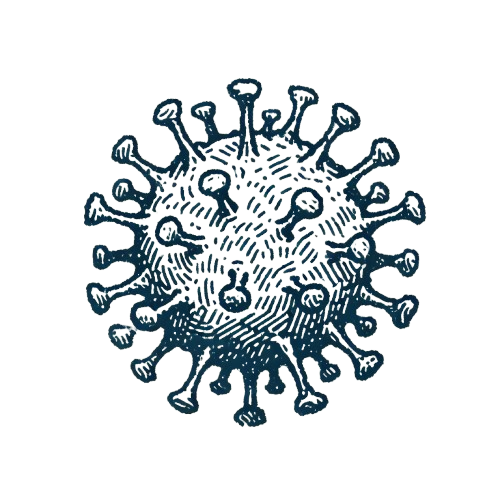Bird Flu Info

Resources to manage the ongoing 2022 - 2024 Influenza A H5N1 outbreak in the US
View the Project on GitHub kenzasam/AvianFluInfo
General Info
About Bird Flu
Bird Flu, also called Avian Influenza, is a disease caused by a flu virus. Highly Pathogenic Avian Influenza (HPAI), is specifically caused by an Influenza A virus subtype called H5N1, which has high mortality. The United States has an ongoing outbreak of H5N1, which started in 2022.
Avian flu is caused by a virus that naturally spreads amongst wild bird populations. It can also infect poultry and other kinds of animals, like mammals, including cows, swine, and humans. Interspecies transmission beyond birds is not well studied.
Risk
Avian influenza caused by strain H5N1 has a high mortality rate in animals, especially poultry. Avian flu can infect humans through animal exposure (feces and body fluids, like blood, mucus, and saliva) or exposure to highly contaminated environments. Infected people may not develop any symptoms and others may develop mild ones. Early symptoms in people can include cough, high fever, shortness of breath, muscle aches, and headache. In severe cases, pneumonia, seizures, a changed mental state or death can occur. Of the human cases (H5N1) between 2003 and 2024, mortality rate has been ~50%, however this reports only detected cases of H5N1 and represents a cases in vastly different healthcare settings. Of the reported US cases, mortality rate is so far 0%.
Currently there has not been any detection of human-to-human transmission. However, small mutations (e.g. a single mutation as documented here) can turn the virus transmissible between humans and highly pandemic potential.
The CDC is actively monitoring the situation. The risk for the public is listed as Low.
People with increased risk of exposure to novel influenza A viruses associated with disease in humans: Waterfowl hunters, poultry workers, backyard bird flock owners, livestock farmers, and livestock workers. Livestock workers with cattle are currently a primary concern. The USDA is monitoring and assisting these workers.
Biosecurity
Countermeasures and surveillance
- There are vaccines available in the case of an outbreak.
- There are antivirals and treatments available in the case of an outbreak
- CDC performs H5N1 specific surveillance (human) through its influenza A diseae surveillance program, and testing humans exposed to infected animals.
- USDA performs H5N1 specific surveillance (animal) by milk testing.
- Independent organizations perform wastewater surveillance.
General Precautions
Avoid direct contact with wild birds and observe them only from a distance. Wild birds can have avian flu even if they don’t look sick. Do not touch sick or dead animals, or surfaces contaminated with animal feces, if possible. Avoid tracking those materials home or to backyard flocks on boots and other items.
About this website
This website contains information pulled from the CDC, USDA, and local state authorities. All other sources are cited. I’m just a volunteer maintaining this website, please reach out if any information needs to be updated or fact checked.